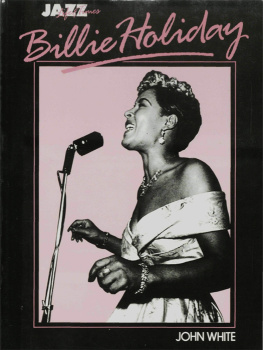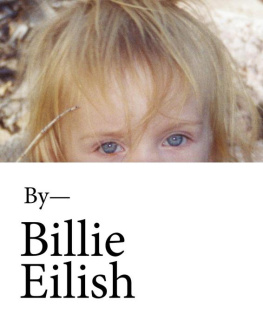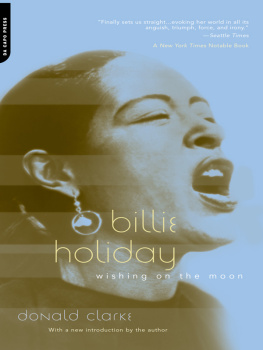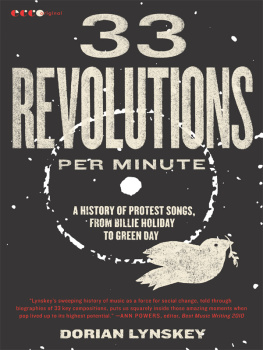

Published in 2017 by Cavendish Square Publishing, LLC
243 5th Avenue, Suite 136, New York, NY 10016
Copyright 2017 by Cavendish Square Publishing, LLC
First Edition
No part of this publication may be reproduced, stored in a retrieval system, or transmitted in any form or by any meanselectronic, mechanical, photocopying, recording, or otherwisewithout the prior permission of the copyright owner. Request for permission should be addressed to Permissions, Cavendish Square Publishing, 243 5th Avenue, Suite 136, New York, NY 10016. Tel (877) 980-4450; fax (877) 980-4454.
Website: cavendishsq.com
This publication represents the opinions and views of the author based on his or her personal experience, knowledge, and research. The information in this book serves as a general guide only. The author and publisher have used their best efforts in preparing this book and disclaim liability rising directly or indirectly from the use and application of this book.
CPSIA Compliance Information: Batch #CS16CSQ
All websites were available and accurate when this book was sent to press.
Library of Congress Cataloging-in-Publication Data
Names: Rohan, Rebecca Carey, 1967
Title: Billie Holiday : singer / Rebecca Carey Rohan.
Description: New York : Cavendish Square Publishing, [2017] |
Series: Artists of the Harlem Renaissance | Includes bibliographical references and index.
Identifiers: LCCN 2015036039 | ISBN 9781502610621 (library bound) |
ISBN 9781502610638 (ebook)
Subjects: LCSH: Holiday, Billie, 1915-1959. |
Singers--United States--Biography.
Classification: LCC ML420.H58 R64 2016 | DDC 782.42165092--dc23
LC record available at http://lccn.loc.gov/2015036039
Editorial Director: David McNamara
Editor: Amy Hayes/Elizabeth Schmermund
Copy Editor: Nathan Heidelberger
Art Director: Jeffrey Talbot
Designer: Stephanie Flecha
Production Assistant: Karol Szymczuk
Production Editor: Renni Johnson
Photo Research: J8 Media
The photographs in this book are used by permission and through the courtesy of: The Library of Congress @ Flickr Commons .
Printed in the United States of America
TABLE OF CONTENTS
Chapter 1
A Legend Is Born, but Too Late
Chapter 2
The Birth of Billie Holiday
Chapter 3
A Troubled Life
Chapter 4
The Songs
Chapter 5
The Rollercoaster of Success
Chapter 6
Lady Days Impact
PART I
The Life of Billie Holiday
I hate straight singing. I have to change a tune to my own way of doing it.
Billie Holiday

Billie Holidays unique talents as a singer have kept her legacy alive.

Holiday emotes into the microphone while performing at the Downbeat Club in New York City, circa 1947.
CHAPTER ONE
A LEGEND IS BORN, BUTTOO LATE
T here are two important things to know about Billie Holiday, and the first is that she was not technically an artist of the Harlem Renaissance. Not the way Bessie Smith, Louis Armstrong, or Duke Ellington were. Though she lived in Harlem during the latter half of the movement, she was too young to have really participated in the era. However, if it werent for the Renaissance and some of its musical forerunners, Holiday may have never had the career that she did. Her career did not exist in a vacuum. It was very much a continuation of the yearsand the careersthat had come immediately before.
The Harlem Renaissance was the name given to the cultural, social, and artistic movement that came out of Harlem between the end of World War I (1918) and the mid-1930s. Harlem had become a cultural center, attracting African-American writers, of segregation and racism. During this period, Harlem was more than the birthplace of an artistic movement: it was also the center of the New Negro movement, in which people of color began demanding equal civil and political rights.
The music of the Harlem Renaissance incorporated jazz and the blues. White people interested in the new musical style flocked to Harlem speakeasies. Through their mutual love of music, interracial socializing was encouraged, though the cultural impact of the Renaissance did little to break down the that were still enforced around the country. It did, however, reinforce racial pride among African Americans.
Its a shame that Billie Holiday was born too late to have been a true participant in the movement. Taking part in the Harlem Renaissance may have given her a sense of belonging that she seemed to lack for most of her life. Holiday was born into a fractured family under a sense of shame, and she had a far from upbringing.
This leads to the second important thing to know about Billie Holiday: much of the information that has endured about her existence, much of what is taken as fact, may very well be fiction. Even her FBI file is thin, jumbled, and inconclusive. Some of the source material about Holidays life comes from newspapers, magazines, and even video recordings. But some comes from unreliable sources.
One of those unreliable sources is Holiday herself. Although she published an autobiography called Lady Sings the Blues in 1956, with the assistance of a cowriter, she later claimed shed never read it. She embroidered or glossed over many of the details of her life in the book. It presents a melodramatic but sanitized version of her life, especially her early years. Many books about Holiday contain anecdotes collected by a writer named Linda Kuehl, who conducted more than 150 interviews with Holidays colleagues, friends and peers. However, many of those people were elderly, drunk, or otherwise under the influence when she spoke to them. Over time, the truthas much as multiple memories can be treated as truthcame out. There is now a certain level of agreement about the sad facts of her early life.
HOLIDAYS PARENTS
Holiday kicked off her autobiography with the following tale: Mom and Pop were only a couple of kids when they got married. He was eighteen, she was fifteen and I was three. Unfortunately, that was far from the truth. Perhaps this was what she wanted people to think. Or it could have been that she thought it was better than her reality. Regardless, here are the accepted facts of her childhood, such as it was: her mother, Sarah (better known as Sadie), was nineteen, and her father, Clarence, was only sixteen when Holiday was born. They never did get married.
Sadie, in fact, was also born out of daughter of an illegitimate daughter. That status had a far-reaching negative effect on both womens lives.
Not much is known about Sadies mother, except that her name was Susie and that she had another daughter, Eva, who was Sadies half-sister. Both girls were born out of wedlock and from different fathers. Its unclear where Susie lived when Sadie was first born, though it was almost certainly on the wrong side of the tracks in Baltimore. When Sadie was almost two years old, her mother married a man named Harris. The three of them moved to Carroll Street in Baltimore. Sadies last name became Harris, also. Susie worked almost constantly, and Sadie had very little education. In fact, she was working by the time she was ten years old.














